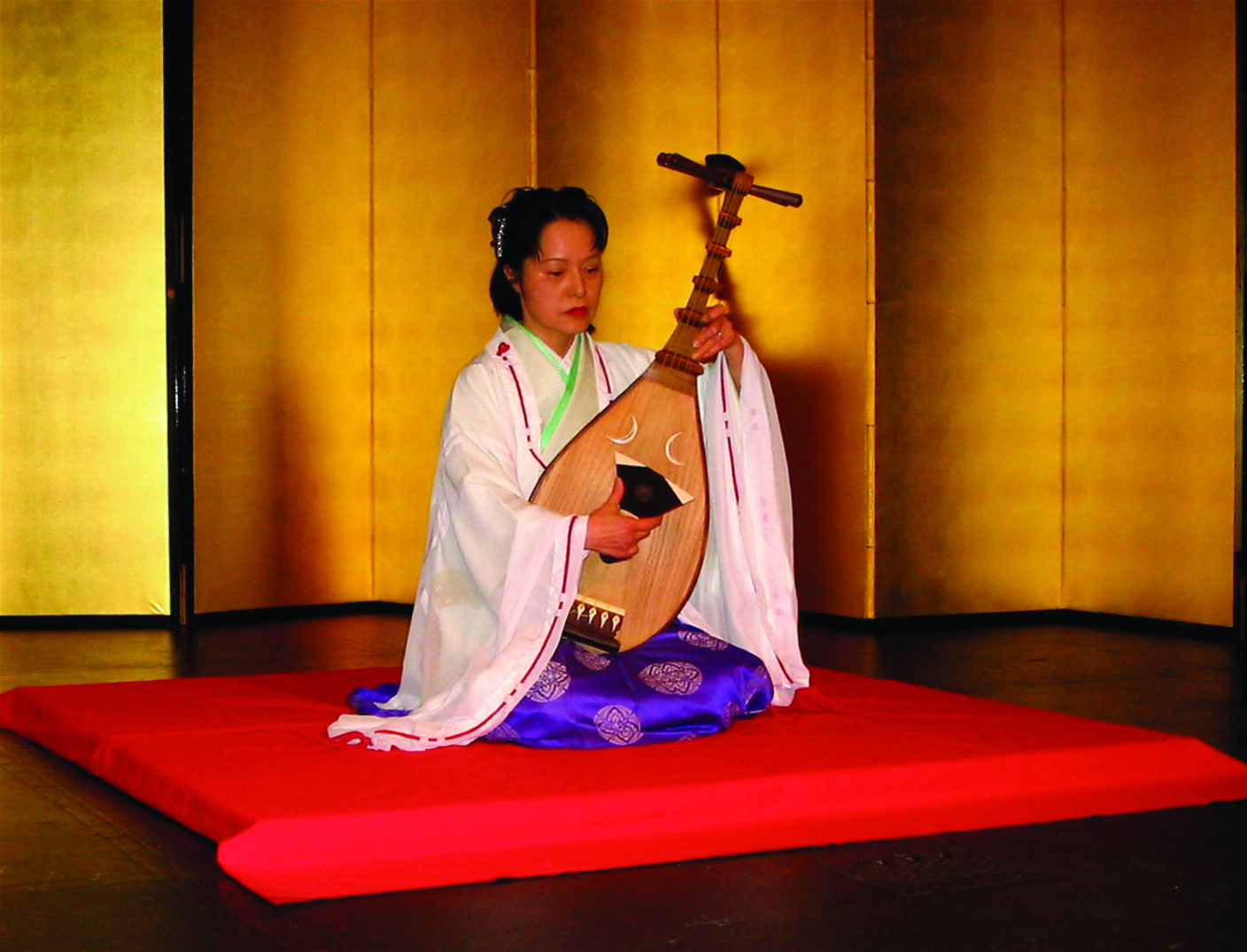Yoko Hiraoka To Share Storytelling Through Music In Free ‘Japanese Ghost Tales’ Concert

Traditional Japanese artist Yoko Hiraoka will be the featured performer during a free concert titled “Japanese Ghost Tales” on Nov. 9 at 7 p.m. at the Black Box Theater in the Liberal Arts and Arts and Humanities building.
Hiraoka will perform two works through narration as she plays a five-stringed lute known as the chikuzen-biwa, a traditional Japanese instrument.
Dr. Martin Regan, professor in the Performance Studies program, said Hiraoka is a master performer of the three major Japanese instruments — biwa, koto and shamisen — and is one of the few who can play all three.
“The biwa we see today can be traced back more clearly from Japan’s medieval period when it was used by wandering minstrels known as biwa hōshi, or lute priests,” he said. “They were blind, and traveled around Japan playing the biwa and telling stories or narrative tales. The biwa has a long history of providing accompaniment for narrative.”
A native of Kyoto, Japan, Hiraoka has a career that spans three decades. She is now based in Louisville, Colorado. Her repertoire includes contemporary compositions by Japanese and American composers as well as classical Japanese music, he said.
Hiraoka said she first heard a biwa through television and radio, but decided to study the Japanese zither, known as the koto, first.
“My teacher was very old school,” Hiraoka recalled. “She was teaching everything in a traditional way, and as I was getting better with koto, she said I needed to study shamisen. Meanwhile, I had the chance to hear the sound of biwa and I loved the tone. I had to ask around for a biwa teacher, and I heard of one near Kyoto. Once I found her, I started to learn.”
Hiraoka moved to the United States in 1993 and has performed on studio recordings and in festivals and concerts. She has also been the beneficiary of funding and support from the consulate general of Japan and various American and Japanese societies around the U.S.
She will perform two traditional Japanese works during her campus concert: “Yugao: Tale of Genji” and “The Demon of Adachigahara.” The narration that Hiraoka will offer in the performance is somewhere between speaking and singing, bordering on chanting, Regan said.
“This technique, known as heightened speech, is used in many genres of traditional Japanese music,” he said. “It’s not similar — biwa hōshi — to singing styles found in opera or popular music. It is a declarative type of singing style.”
The concert will also include a lecture and history of the biwa as a storytelling modality, he said. The first performance, “Yugao: Tale of Genji,” based on a text by Murasaki Shikibu in the 11th century, covers the “pleasures of court life and the passionate romantic entanglements of the shining Prince Genji,” Regan said.
The tale starts on an evening where Yugao agrees to meet Genji in person and travel to a rural palace after consummating their love, he said. Yugao dies tragically after being killed by a jealous spirit of Genji’s high-ranking former mistress, Lady Rokujō, he said.
Prince Genji is in agony and sickness for 20 days after her death, and learns that Yugao was the mistress of his brother-in-law. Genji also learns that Yugao left courtly life to run away from the jealousy of her lover’s wife, Regan said.
The second narrative performance, “The Goblin of Adachigahara,” written by Yei Theodora Ozaki in 1908, is the tale of a demon legend who “lures unsuspecting travelers into evenings that they will never forget,” Regan said. Hiraoka said the story is based on an old Japanese legend of Oni-baba, who was a female demon in Adachigahara.
Regan said it’s important to tell these stories of Japan’s history in a narrative style using classical Japanese instruments. Most Japanese music is based in song, he said, and was used by wandering minstrels to deliver information.
“It was kind of like the medieval equivalent of the modern-day newspaper,” Regan said. “Since there were no newspapers at the time, like newscasters, biwa minstrels traveled around Japan telling their stories.”
Hiraoka said she appreciates the opportunity to share this music form. It was rare in Japan after World War ll, she said, and though it gained popularity, it faded over the years.
“As people in Japan started having access to TV, this way of getting entertaining performance art became rather obsolete,” she said. “A lot of our biwa players at that time in the mid-20th century started losing job opportunities. It became very rare, and it is only recently that people started paying attention to this music as a way of narrating stories as an art form once again.”
Top photo courtesy of Yoko Hiraoka.